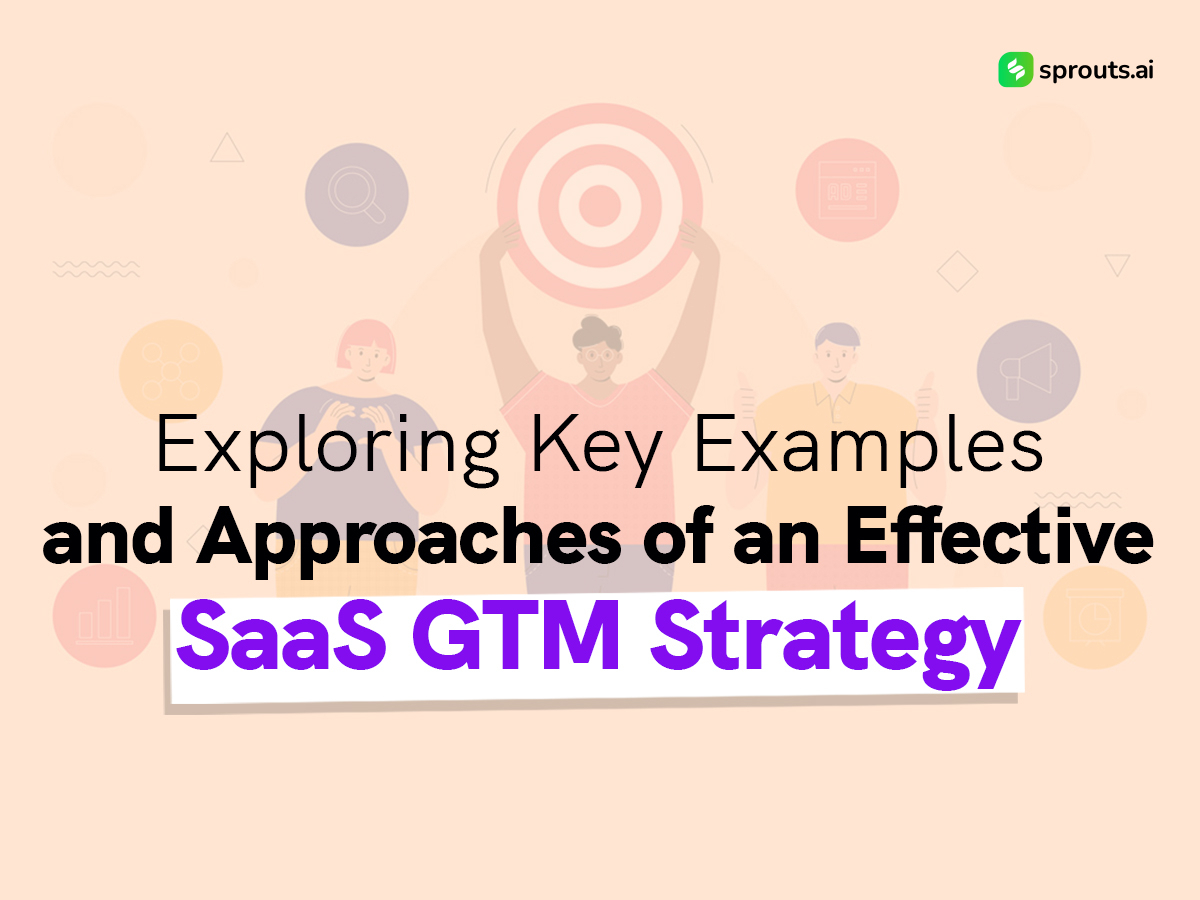As companies seek innovative solutions to address market demands, a robust go-to-market strategy becomes the cornerstone of their success. This strategy defines how a product will reach its target audience and dictates its growth trajectory. This blog covers the go-to-market strategy examples and delves deep into the SaaS go-to-market strategies.
Understanding the Essence of Go-to-Market Strategy
A go-to-market (GTM) strategy is more than just a plan; it’s a blueprint that guides a SaaS product’s journey from inception to customer adoption. It encompasses every aspect of introducing, promoting, and delivering the product to the market, aiming to achieve sustainable growth.
Key Components of an Effective Go-to-Market Strategy
Market Research and Segmentation: Successful SaaS GTM strategies begin with a comprehensive understanding of the market landscape. Identifying target customers, their pain points, and their preferences is essential. Segmentation ensures that resources are focused on the most promising avenues.
Value Proposition: A strong value proposition defines the unique benefits the SaaS product offers customers. It is the compelling reason why customers should choose this solution over others. Clear articulation of this proposition is vital for capturing attention.
Positioning and Messaging: How the product is positioned in the market and the messaging used to communicate its value directly impact customer perception. Consistent and resonant messaging creates a strong brand image and enhances customer engagement.
Distribution Channels: Choosing the right distribution channels is crucial. Whether direct sales, partnerships, or online platforms, aligning distribution channels with the target audience’s preferences maximizes product visibility.
Pricing Strategy: Pricing is a reflection of the product’s value. A well-defined pricing strategy should consider factors such as perceived value, competitive pricing, and the overall pricing structure of the SaaS market.
Sales and Marketing Tactics: The strategies to promote the SaaS product are pivotal. Content marketing, social media campaigns, webinars, and influencer collaborations are just a few tactics that can amplify brand visibility.
Customer Onboarding and Support: An exceptional customer experience doesn’t end with the sale. Seamless onboarding and continuous support contribute to customer satisfaction and long-term retention.
Go-to-Market Strategy Examples: Illuminating the Path
Slack: A prime example of an effective SaaS go-to-market strategy is Slack. It recognized the need for streamlined workplace communication and positioned itself as the solution. Slack created a viral effect by offering a free version that allowed teams to experience the product’s value firsthand, as satisfied users recommended it to others. This freemium approach and clever integrations and partnerships catapulted Slack to rapid adoption.
HubSpot: HubSpot’s go-to-market strategy is characterized by its inbound marketing methodology. By creating valuable content that addressed the pain points of businesses, HubSpot attracted a loyal audience. Their free tools and resources established trust and positioned HubSpot as a thought leader in marketing and sales.
Zoom: Zoom’s go-to-market strategy disrupted the video conferencing industry. By prioritizing user experience and ease of use, Zoom quickly gained popularity. Its freemium model and a referral program allowed satisfied users to become advocates, driving organic growth.
Salesforce: Salesforce’s success can be attributed to its pioneering of the Software as a Service model. Its go-to-market strategy emphasized customization, scalability, and the ability to cater to diverse industries. Through direct sales, partnerships, and a robust ecosystem, Salesforce became a leader in cloud-based CRM solutions.
The Evolving Landscape and Future Considerations
As the SaaS landscape evolves, go-to-market strategies must adapt to new challenges and opportunities. Personalization, data-driven decision-making, and a holistic approach to customer success are increasingly important. Embracing emerging technologies such as artificial intelligence and predictive analytics can provide a competitive edge in identifying market trends and optimizing strategies.
A well-crafted go-to-market strategy is a compass that guides a SaaS product toward success. Through understanding the market, defining value propositions, and implementing effective tactics, companies can introduce their products and foster enduring customer relationships. The examples of Slack, HubSpot, Zoom, and Salesforce showcase the diverse approaches that can lead to triumph in the SaaS industry.
In SaaS, go-to-market strategy examples serve as beacons of inspiration, inviting companies to innovate and redefine how they bring their products to the world. By crafting strategies that resonate with their target audience, businesses can navigate the complexities of the market and embark on a journey of growth, innovation, and customer-centric success.

